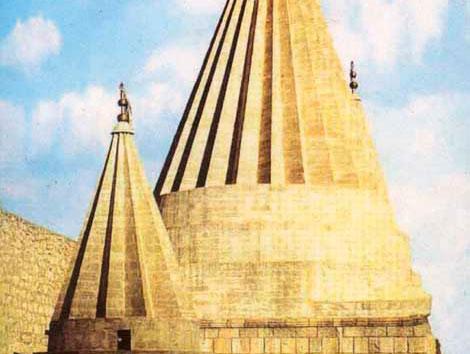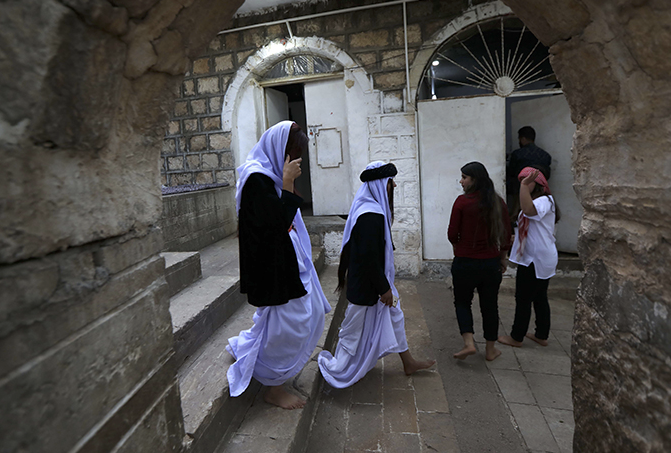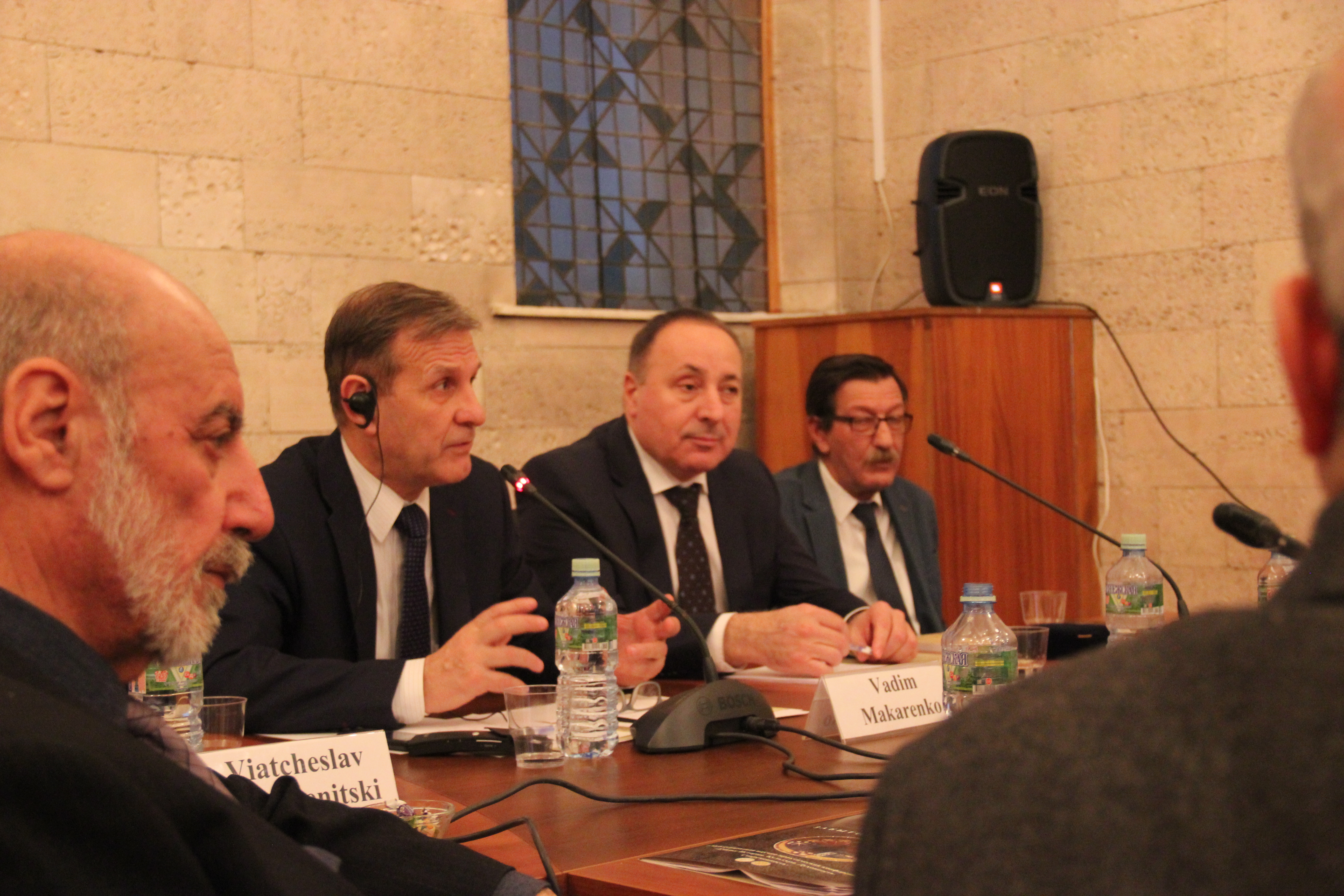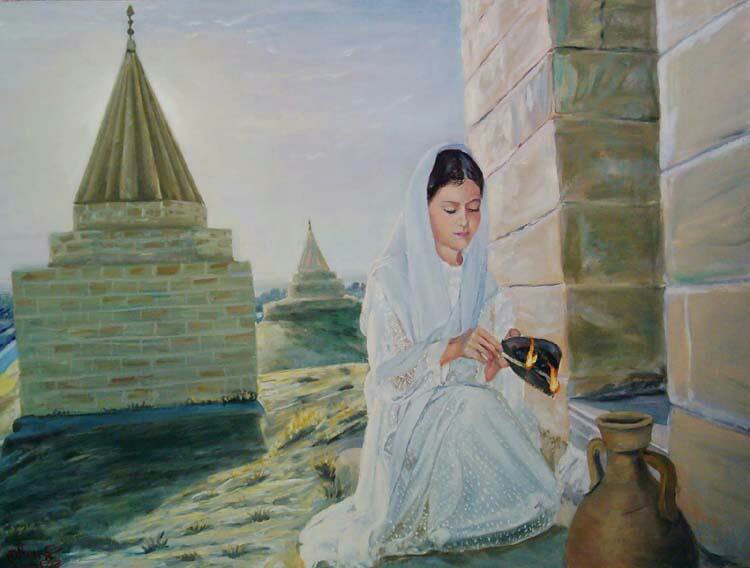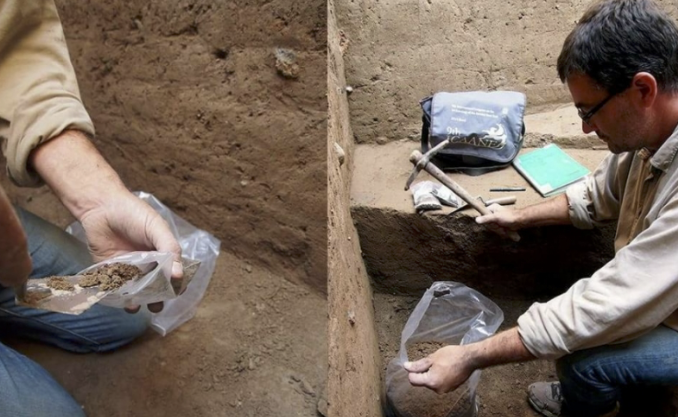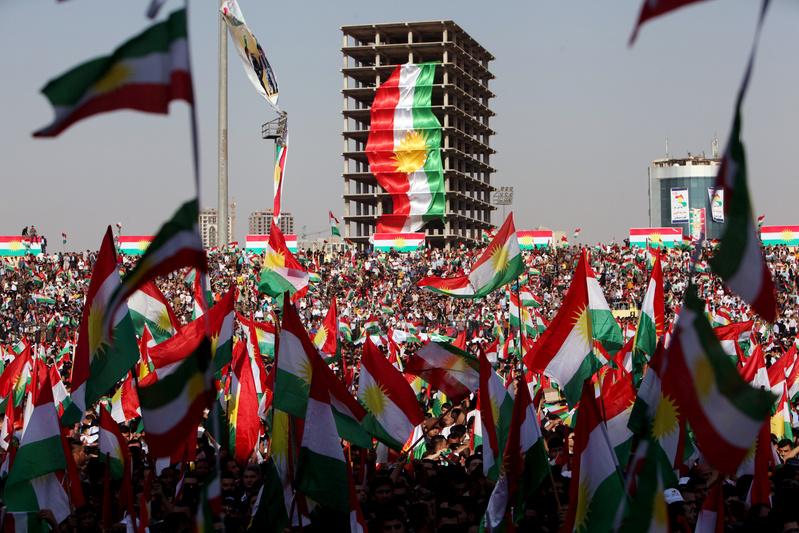Articles
Life After ISIS Slavery for Yazidi Women and Children
Cathy Otten / 30 августа 2017 года
This summer, Iraqi forces finally drove isis out of Mosul and most of northern Iraq. But for the Yazidis, a long persecuted religious and ethnic minority who practice a faith with pre-Zoroastrian roots and Islamic and Christian influences, stability is still a distant prospect. isis militants consider the Yazidis infidels and have subjected them to systematic killings, rape, and pillage. In the summer of 2014, isis killed hundreds, possibly thousands, of Yazidis; more than fifty thousand survivors fled to Sinjar Mountain, in the baking August heat. Three thousand Yazidis remain in isis captivity, but as isis has lost territory, international interest in them has faded.
Leila, who was twenty-three, was enslaved by isis, one of six thousand Yazidis who were captured in Sinjar. She was taken with other Yazidi women to Raqqa, Syria. She was moved again, and a Sunni Arab farmer from a village near Sinjar bought her. She knew the man—he had been like a godparent to Leila and her brothers when she was a child. Leila thought he would save her. Instead, after three days, he sold her to an isis military commander, who kept her in captivity for more than a year and regularly raped and tortured her. Her captor, she told me, did “a lot of terrible things—actions against God.”
In the spring of 2016, Leila, whose name has been changed to protect her privacy, managed to contact a smuggler, who guided her to freedom in Iraqi Kurdistan. Seven months after her escape, she was living in a small camp for displaced Yazidis under a string of mountains in Iraqi Kurdistan. In the first days and weeks after her escape from isis, Leila felt relieved to be free and back with her family. When I met her again later, relief was giving way to shock and a struggle to communicate. She experienced nightmares and flashbacks, and began worrying constantly that isis fighters would kidnap her again. I met her soon after her release, and then saw her mental state deteriorate. The Yazidi religious authorities welcomed back those who had been isis slaves, but, as Leila told me, readjusting to family life was difficult. “The Yazidis will never recover,” she said. “Even if we marry or fall in love, there will still be this thing inside that is broken.”
Today, most Yazidis remain displaced in camps and temporary shelters in the Kurdistan region of northern Iraq. Some have returned to Sinjar, but they live in fear of further violence. Over the last three years, different armed groups have taken control of different parts of the Sinjar district. In 2014, the Kurdistan Workers’ Party, or P.K.K., which has battled the Turkish government for decades, fought through isis-held territory alongside Syrian allies and opened a land corridor to Syria, allowing thousands of Yazidis stranded on Sinjar Mountain to escape. In 2015, fighters from Iraq’s Kurdistan Regional Government, known as peshmerga, retook the city of Sinjar from isis. Now the P.K.K. refuses to leave Sinjar. In response, forces backed by the Kurdistan Democratic Party, the main player in the Kurdistan Regional Government, have restricted the passage of goods through its checkpoints to Sinjar, preventing the destroyed city from being rebuilt, although, according to locals, restrictions have somewhat eased recently. Continued fighting with isis and a lack of funding from the cash-strapped Kurdistan Regional Government, the Iraqi government, and the international community have also slowed rebuilding.
Earlier this summer, Iraqi state-backed Shiite militias, with Yazidi recruits, drove isis out of a strip of Yazidi towns and villages south of Sinjar. The militias operating around Sinjar have recruited, trained, and armed local Yazidis with the assistance of their regional backers. Today, the brightly colored flags of various groups flutter above their respective checkpoints, which are sometimes only metres apart along roads not long ago controlled by isis. This spring, clashes broke out between the P.K.K. and peshmerga-backed forces, leaving at least four dead. When pro-P.K.K. Yazidis protested the violence, a Kurdistan Democratic Party-backed militia shot at least one demonstrator. In April, Turkish air strikes aimed at P.K.K. bases injured at least one Yazidi fighter and mistakenly killed at least five Kurdish peshmerga. The violence and myriad checkpoints have created a sense among Yazidis that they are pawns in a regional power struggle. As Sabah, a thirty-year-old nurse who was briefly captured by isis, told me, “Sinjar is divided into three parts, and everyone has a gun.” In the vast majority of my conversations with Yazidis, they told me that they would leave Iraq if they could. They complained that the bodies of their male relatives remained in shallow graves at massacre sites around Sinjar. Three years after they died in mass executions, the Yazidi men haven’t been exhumed because of a dispute between Iraqi and Kurdish officials over jurisdiction.
“We want to go somewhere safe,” Mehbed, a fifty-seven-year-old Yazidi woman, told me as she rocked her granddaughter to sleep inside their half-built home underneath a low ridge of hills in Iraqi Kurdistan. Her husband ekes out a living growing cucumbers and tomatoes in their garden. isis left makeshift bombs and ruined homes. The bodies of isis fighters still remain in their neighbor’s house and the mass graves are still full, Mehbed’s husband, Barakat, told me. “Those villages are gone forever,” he said.
This July, Iraqi forces found a thirteen-year-old Yazidi boy in the rubble of Mosul’s Old City while the battle for the city was ongoing. Emad Tammo had spent the past three years as a slave for isis fighters who forced him to carry ammunition and fetch water at front lines across the caliphate. When I met Emad, in his family’s sparse concrete house north of Mosul, he could barely speak, and his small body looked fragile after only eating small pieces of dates for months. I sat with him on the edge of a narrow bed while he played video games, his body curled over as if in self-defense.
Emad told me that during his years in captivity, shrapnel from a mortar lacerated his stomach, a bullet hit his elbow, and debris from a blown-apart building hit his head after an air strike. “Some of them were beating and insulting me, and some of them were a little better than others,” he told me, of the isis fighters. “It depended on who I was with.”
Emad seemed to be finding it hard to engage with his family. His uncle, Hadi Tammo, told me that Emad’s small cousins, who played in a back room of the house, had escaped from isis captivity last year. “I’m worried about him,” Hadi told me. Another six members of his family, including Emad’s brother and father, are still either missing or dead. Emad’s mother had travelled to Canada after escaping isis herself, last year. After I met Emad, a Canadian government program for vulnerable Yazidis agreed to fly him to Canada. On August 17th, he arrived in Winnipeg and was reunited with his mother.
Toward the end of the Mosul offensive this July, when only pockets of the city remained under isis control, I tried to find the Galaxy wedding hall, on the east bank of the Tigris River, where isis fighters had held thousands of Yazidi captives, including Emad, at different times. The wedding hall, which was a popular venue before isis, sits near a wooded road with fair stalls and cafés. Yazidis had told me that they were kept there with little food and no privacy and that, as they waited, they experienced a growing feeling of dread. Thousands of women and children held in the Galaxy were sold by isis in Mosul, or sent to prisons in Raqqa. When I eventually came upon the hall, it lay in ruins after an air strike.
One woman told me that, while she waited in the wedding hall, she feared that isis would sell her teen-age stepdaughter to an isis fighter. Frantic, she ordered the girl to go into the bathroom and have sex with a male Yazidi captive. The mother thought that if her stepdaughter were no longer a virgin, it would save her from rape by isis. “We destroyed her . . . I didn’t have another solution,” she told me. The shame of her stepdaughter losing her virginity to a non-Yazidi man would have been worse, she insisted. When I met the woman last year, she was living in a two-room house in northern Iraq with other relatives who had managed to escape. Her stepdaughter remained in captivity.
Nergez, a thirty-six-year-old former isis slave, was also waiting for information about the fate of her two teen-age daughters and teen-age son, who remained in isis captivity. She told me that she was following the news of battles against isis in Syria and Iraq. Her village was recently liberated, but Nergez, who declined to give her full name, continued living in a small blue tent on the edge of a large camp for displaced Yazidis in Iraqi Kurdistan. “Why would we go back to our village?” she told me, as she sat beside a group of female relatives. “It is just as terrible there as it is here, and I still don’t know where my children are.”
Leila told me that she didn’t understand the priorities of the countries leading the war on isis. She wondered why such a large emphasis has been placed on winning back land instead of people. “Sometimes I watch the TV and I see the news of the army taking more land and villages,” Leila told me, explaining her confusion and pain that most Yazidis are still imprisoned. “We know most of them are in Raqqa, so why are they not going to save them there? Why are they taking these empty villages?”
Источник: newyorker.com

